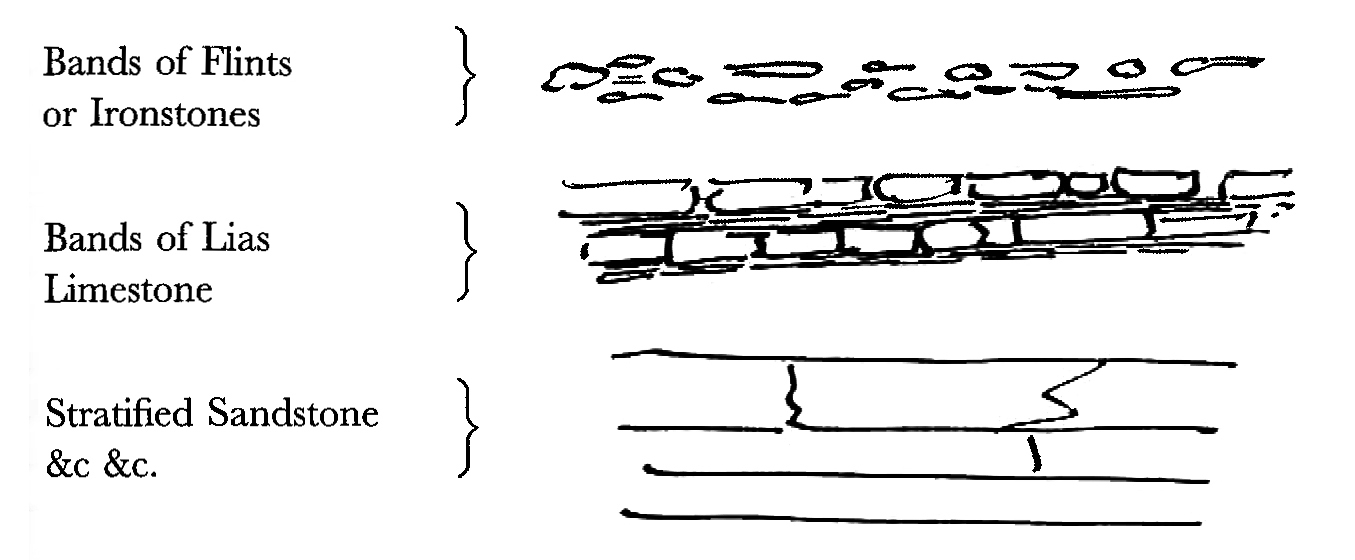From George Maw 19 February 1863
Benthall Hall, | nr. Broseley.
19th. Feby 63
Dear Sir
I have been requested by the promoters of the The “Severn Valley Naturalists field Club” which has just been established in this neighbourhood for the purpose of collecting facts relating to & reading papers upon the natural history of the southern half of Shropshire to write and ask you as a native of our county, whether you would do us the honor of allowing us to place your name on our list of honorary members.1 The club includes several good naturalists & I trust that our operations will be really practical. I need not say what great pleasure it will give me to be able to communicate to the committee your assent to their wishes—
I am noting down a few particulars on a rather interesting fact I think I have noticed respecting the relative characters in different localities of the different strata of the Shropshire coal field. For instance that in two seams of coal where one is of unusual thickness it is to the disparity of another & distinct seam separated from it by several yards of intermediate strata

In a locality where as at A No 1 is thick No 2 is thin & where as at B No 1 is thin No 2 will be thick & at another locality C Nos 1 & 2 may be nearly equal—again Colliers in forming a pit can tell through many yards of strata the probable character of the seam of coal they are sinking to—these facts seem to imply that the several strata must have been simultaneously deposited & I fancy that this relationship of constituents will be found to exist thro many hundred feet of strata— I am collecting evidence on this point & fully expect to find that the sum of the thickness of the ten or twelve seams occurring in the fully developed parts of our coal field will vary but very slightly however much the proportionments into seams may differ in different localities— If the strata of our coal field had been formed by what we imagine to be an ordinary succession of deposits caused by an interrupted agency I do not see how this relationship amongst the constituent Strata can be accounted for
I am impressed with a vague idea of great simultaneous deposits & subsequent aggregation (whilst in suspension) into bands of coal clay Ironstone & Sandstone If every separate alternating band of Sandstone Limestone or Clay (as in the wealden for example)2 has been the result of a distinct geological epoch—such a change in the contours of the earths surface as would be necessary to entirely shut out the source of supply of one material & bring another under disintegrating action appears inconsistent with the repose necessary to evenly deposit the thin & closely alternating bands of different materials occurring in such formations as the wealden or Lias—3 In the formation of bands of Flints & Ironstones there must have been aggregation subsequent to deposition & yet these bands appear closely related in structure to the thin bands of Limestone & other stones occurring in the Lias & several formations & these again insensibly merge into the structure of all stratified rocks.

If stratified rocks are merely the result of the successive degradation of older rocks we should expect to find in the recent formations a uniform mixture equivalent to the average compositions of all the antecedent formations unless some power of re-aggregation once existed with which we now see no parallel
If such powers did exist a mere separation of strata or alternation of material does not imply a distinct act of deposit & it becomes a most interesting question (in addition to the evidences of organic remains) as to the range of strata in “a formation” included in each separate act of deposition whether the whole strata of a coal basin has been in simultaneous suspension whether deposited at two or three times or whether each stratum in which a different material occurs must be assumed to correspond with a distinct act of deposition I must ask your pardon for troubling you with these remarks but the subject is one which has deeply impressed me
Believe me Dr Sir | very truly yours. | George Maw.
Charles Darwin Esq | Down Bromley | Kent.
Footnotes
Bibliography
EB: The Encyclopædia Britannica. A dictionary of arts, sciences, literature and general information. 11th edition. 29 vols. Cambridge: Cambridge University Press. 1910–11.
Summary
Discusses the structure and particular uniformities of the Shropshire coal-seams and surrounding strata; speculates on their origins.
Letter details
- Letter no.
- DCP-LETT-3999
- From
- George Maw
- To
- Charles Robert Darwin
- Sent from
- Benthall Hall
- Source of text
- DAR 171: 97
- Physical description
- ALS 8pp
Please cite as
Darwin Correspondence Project, “Letter no. 3999,” accessed on 19 April 2024, https://www.darwinproject.ac.uk/letter/?docId=letters/DCP-LETT-3999.xml
Also published in The Correspondence of Charles Darwin, vol. 11


